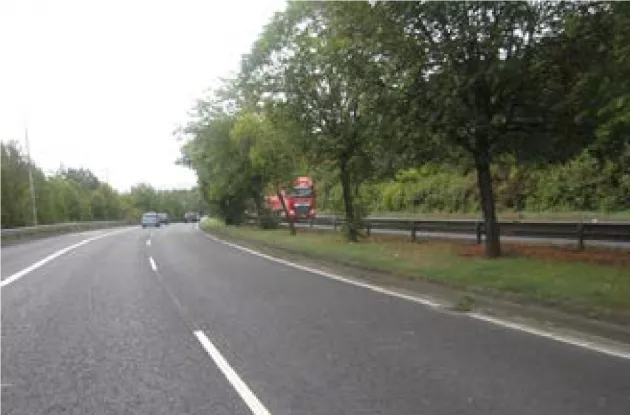5.2.1 Access by Roads
5.2.1 Access by Roads
The landscape plan proposes the protection and promotion of greening along the main road corridors leading to and from the city centre, which are the M1, N2, N3, N4, N7 and N11 from the M50.
The M4/N4/Chapelizod Bypass route into/from the city centre provides an excellent example of a successful green road corridor, in particular along the Bypass section, where mature median and road edge planting is now well established.
The success of this lies in the provision of adequate space to accomplish greening, which may not exist along all routes. While the above example consists of public lands, the concept of route corridor greening can be assisted with the contribution of private land where planting is established and maintained by the owner. Modern road corridors can appear quite similar due to standards of design and the use of landscape and art can help foster identity. In approaching the city both the M50 junctions and inner-city canals can provide identity thresholds to the inner-city and outer city area.
It is proposed to signify these thresholds by creating large scale landscape/art features at each of the main M50 junctions. An example of this effect can be seen in the Angel of the North sculpture in England which is located close to the A1 road corridor south of Gateshead and Newcastle upon Tyne. To achieve this, an ideas competition in cooperation with the National Roads Authority and Dublin local authorities is proposed.
A more subtle approach is proposed for the canal threshold to the inner-city. Many road corridors crossing the canals are distinguished by the older hump-back bridges with stone parapet walls. Improvement to their appearance is suggested through upgrading the public realm in the immediate vicinity, the introduction of seasonal planting and bridge name stones/signs.
